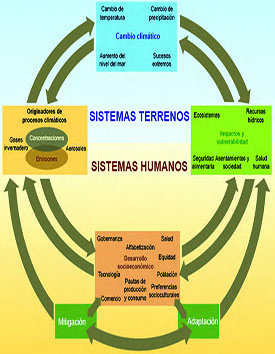Nature is becoming vulnerable. Will it be possible to stop climate change?
Abstract
Global warming is unequivocal, as can be seen from the observed increase in the average world temperature of air and ocean, the widespread melting of snow and ice, and the rise in sea level (IPCC, 2007). In Venezuela, the most plausible future climate will be drier and warmer than the current one, increasing the risk of droughts and forest fires. Given the increase in the intensity of precipitation, it is estimated that even if it rains less, the rains will be more aggressive, increasing the risk of sudden floods and landslides, especially in the most vulnerable mountainous areas, and decreasing their agricultural effectiveness (First Communication on Climate Change for Venezuela, 2005).
References
Cárdenas, P., Martelo, M.T.,
García, L.F., Gil, A. (2003).
Impacto de los eventos El
Niño – Oscilación del Sur en
Venezuela. Parte II. Corpo-
ración Andina de Fomento,
CAF. Caracas, Venezuela.
Intergovernmental Panel on
Climate Change – IPCC.
(2007). Working Group I Re-
port “The Physical Science
Basis” Technical Summary.
Cambridge University Press,
United Kingdom.
Ministerio del Ambiente y de los
Recursos Naturales – MARN.
(2005). Primera Comuni-
cación Nacional en Cam-
bio Climático de Venezuela.
Programa de las Naciones
Unidas para el Desarrollo
(PNUD), Fondo Mundial para
el Medio Ambiente. Fundam-
biente. Caracas, Venezuela.
Moreno H. 2008. Unas 90 mil
hectáreas arden anualmente
en Venezuela. El cambio
climático también pega en
Venezuela. YVKE Mundial
Nacionales. Disponible:http://
www.radiomundial.com.ve/
yvke/noticia.php?5334. Con-
sulta: 12/01/2011.


